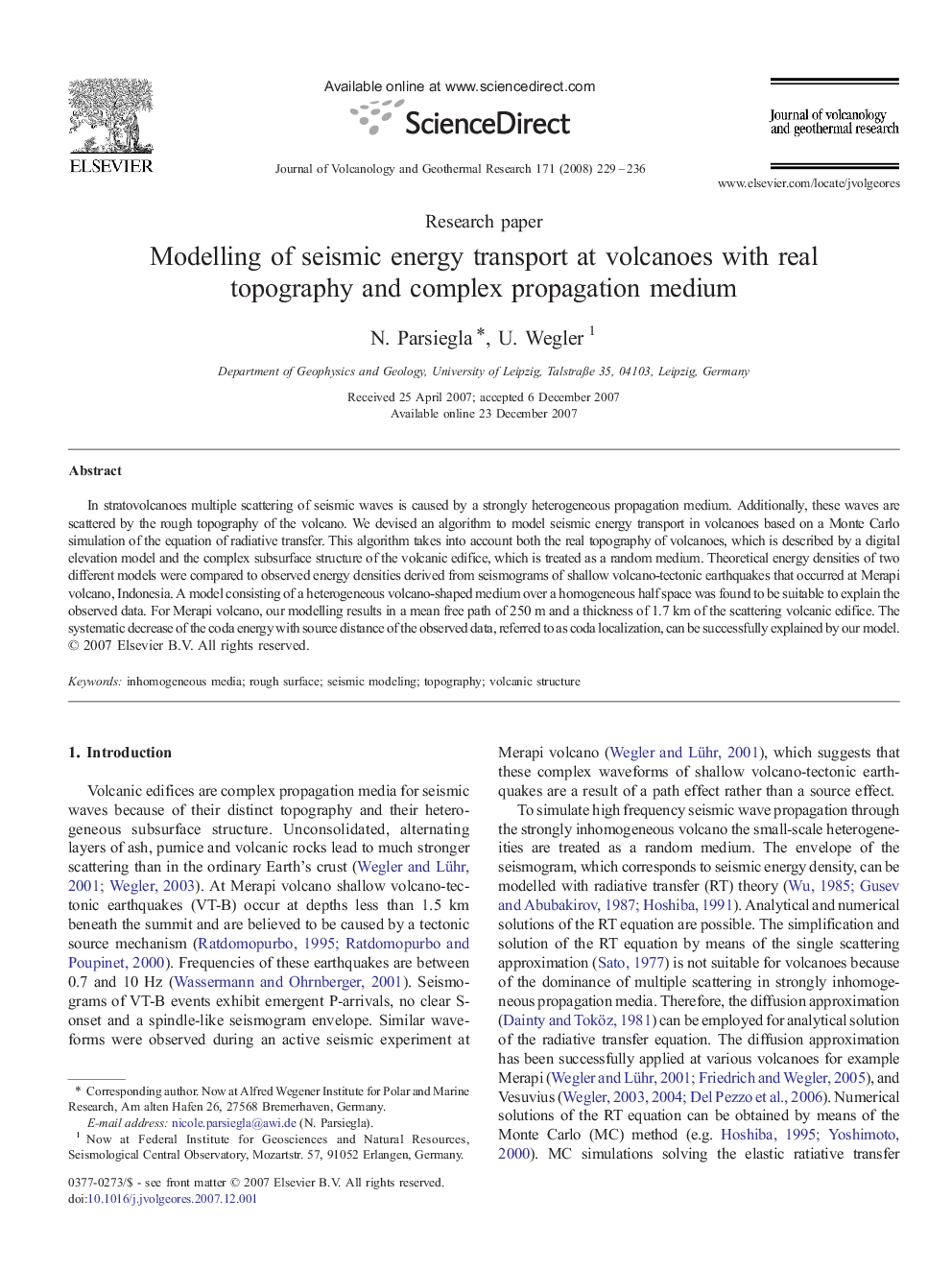| Article ID | Journal | Published Year | Pages | File Type |
|---|---|---|---|---|
| 4714844 | Journal of Volcanology and Geothermal Research | 2008 | 8 Pages |
In stratovolcanoes multiple scattering of seismic waves is caused by a strongly heterogeneous propagation medium. Additionally, these waves are scattered by the rough topography of the volcano. We devised an algorithm to model seismic energy transport in volcanoes based on a Monte Carlo simulation of the equation of radiative transfer. This algorithm takes into account both the real topography of volcanoes, which is described by a digital elevation model and the complex subsurface structure of the volcanic edifice, which is treated as a random medium. Theoretical energy densities of two different models were compared to observed energy densities derived from seismograms of shallow volcano-tectonic earthquakes that occurred at Merapi volcano, Indonesia. A model consisting of a heterogeneous volcano-shaped medium over a homogeneous half space was found to be suitable to explain the observed data. For Merapi volcano, our modelling results in a mean free path of 250 m and a thickness of 1.7 km of the scattering volcanic edifice. The systematic decrease of the coda energy with source distance of the observed data, referred to as coda localization, can be successfully explained by our model.
